Resources

In my last two blogs, I have been sharing some thoughts on teaching Sufism and contemporary Sufism, giving special consideration to the importance of helping students actively explore different elements of Sufi tradition and culture in the different Islamic periods. For this blog, I would like to point out opportunities to teach about Islamic arts from Sufi perspectives in order to provide a taste of Sufism’s impact on Islamic cultures and societies. Focusing on the arts allows the student to learn that Sufis frequently sought more artistic means of expression, including poetry, architecture, music, and calligraphy, in order to transcend the conventional language of theology and philosophy which too often fails to prove an adequate means of communicating higher truths. From Sufi perspectives, the arts embody metaphysical principles in visual and auditory forms, communicating these principles with an immediacy difficult if not impossible to achieve within the discursive confines of prose. Additionally, the arts have further functioned as a means to express the simultaneous unity and diversity of Islamic civilizations, as they communicate principles shared by all Muslims, and yet these principles are expressed through diverse cultural themes and motifs, illustrating the confounding array of cultural forms found within Islam. The profound influence of Sufi poetry, whether it be in Persian, Arabic, Somali, Urdu, or Turkish to name a few languages, is essential to discuss with students. For many Sufis (e.g., Rumi, Ibn al-Farid, al-Hallaj) poetry was the peak of eloquence and culture for expressing the vicissitudes of human life. By evoking perennial realities such as death, time, and change, poetry brings us into contact with our own existential limitations. In particular, by exploring the poetic works of different Sufi personalities, the student becomes familiar with a variety of Sufi themes, principles, practices and experiences. Studying Sufi poetry and the many poetic techniques (metaphorical language, rhythmical patterns, etc.) then helps the student to understand Sufi symbolism and the idea that the Sufi poet was endowed with the ability to penetrate the veil of appearances in order to depict the essential character of the image being portrayed. In other words, poetry becomes a vehicle to decipher the signs of the Divine. Architecture is also another artistic tradition that can help students consider how the sacred principles of Sufism took material form in structure, with the shrines of saints and Sufi lodges as well as mosques. These architectural wonders would define the great Islamic cities, while also leaving imprints on the surrounding, expansive countrysides. Students appreciate exploring how these structures were carefully constructed utilizing sacred geometrical principles, symbolic forms and ornamentation, color theory, and sacred calligraphy. Ultimately, many of these structures were created to communicate higher realities and Sufi cosmologies. These sites within the built environment were also the places where one of Sufism’s most iconic artistic forms took shape, the various sorts of chant and music developed by different Sufi orders. Each order would develop its own liturgy of chant, with particular formulas, breathing techniques, musical accompaniment, and even dance, reflecting the particular lineage and ethos of the order. By focusing on the significance of architecture, students learn that Sufi shrines and lodges and mosques of Muslim societies were pivotal sites around which Muslim culture revolved and evolved, where dervishes and sultans, devotees and those seeking healing, all came to participate in the presence of the sacred atmosphere they encountered at these sites. In many cases structures built for trade and residence would radiate outward from centrally located sacred spaces, visually representing the concept of the qutb, the Muslim saint who watches over a particular region. Shrines and lodges integrated local cultural architectural forms, making African and Asian as well as Arab and Persian architectural styles (to name just a few) integral parts of Islamic architecture more broadly. Finally, exploring the world of Quranic calligraphy and its influence on Sufism also helps students appreciate some very abstract metaphysical understandings. For many Sufis this practice of writing the sacred word took on added levels of significance, encouraging them to play a very active role in the development of Quranic calligraphy. They experienced calligraphy as an attempt to communicate spiritual truths and realities. In their pursuit of calligraphy, Sufis emulated the broader norm within Islamic culture to give deep respect to the capacity of the written word to convey revealed truths. They regarded Quranic calligraphy as a holy art that offers baraka (blessing) to the recipient of its beauty and wisdom. They contemplated not just the divine words and chapters in themselves, but also the Arabic letters as constituent elements of divine speech. The practice of calligraphy thereby became integrated with other methods of Sufi practice and included reflection on sacred and symbolic qualities of Quranic words. When sharing the significance of Sufism and the arts, it is important to emphasize how this deeply aesthetic orientation of Islamic culture is rooted in the Qur’an itself, which expressed ethical and metaphysical principles with rhythm and rhyme. This divine beautification of the word would be emulated by Muslims, for whom the word was central to artistic expression. The Quranic word then was beautified aurally in recitation, and visually in architecture, calligraphy, and crafts. This beautiful expression of the word further functioned to inspire divine remembrance, as the linguistic signs of God surrounded Muslim daily living. For many Sufis then any artistic expression, like poetry, architecture, and calligraphy, was a contemplative discipline, the practice of which was a form of dhikr, the art of remembering the Divine. 1. ‘I believe in the religion of love’ This calligraphic piece by Hassan Massoudy is a saying by Ibn al-‘Arabi from his book of poetry, Interpreter of Desires: ‘I believe in the religion of love, wherever its stages may go, love is my religion and faith.’ Hassan Massoudy, a native of Najef, Iraq, is a world-renowned master of contemporary Arabic calligraphy whose works bring light to a variety of classical Sufi personalities and their well-known sayings. To see more of Hassan Massoudy’s artwork visit http://www.massoudy.net. 2. Darou Khoudoss in Touba, Senegal Darou Khoudoss, “the Abode of the Holy,” is a mosque that was built in the place where Ahmadu Bamba, leader of the Muridiya Sufi order, experienced spiritual retreats and received mystical visions. This photo was taken by Dr. Eric Ross. For more about Ross’ research see https://ericrossacademic.wordpress.com/. 3. Sema A watercolor painting in the Shirazi style (c. 1582) depicting a sema. This picture is notable in that four women and a child are part of the Sufi circle, suggesting their initiation into the practices of the order. Source credit: https://the.ismaili/ismaili/fr/london-exhibition-provides-insight-life-and-legacy-prominent-persian-ruler
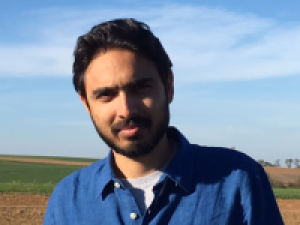
In this blog, I want to continue with the theme that animated my last post “Genealogically Attuned teaching in an Introductory Course on Islam.” To remind, the question I had engaged had to do with the problem of presenting in an undergraduate amenable fashion theoretical insights from the study of religion and the broader humanities. My investment in this question derives from the problem of how one might make in an introductory course on Islam theoretical arguments commonly advanced in humanistic scholarship through strategies that bypass the density of scholarly theoretical discourse. In other words, how to do theory in an introductory course without subjecting students to theory pressure? The last blog dealt with some challenges and prospects for the first day of an Introduction to Islam class by way of some reflections on interrogating the category of religion. Here I wish to briefly think about this problem in relation to more specific thematic units of such a course. First a brief description of the conceptual problem I want to think through here. One recurrent tendency I have observed among students is to regard phenomena such as colonialism and orientalism as historical events consigned to a safely distant past, as belonging to the 19th century neatly separated from their own present. How could this problem of assumed shelter from the violence of colonial pasts and their attached knowledge legacies be addressed in an Introduction to Islam course? How could the persistence of the shadows of colonial power be impressed upon students? The first day of a unit on Sufism presents a potentially profitable moment for such a task. The unit on Sufism (for thematically organized introductory courses) represents a highly rewarding yet challenging stop on the pedagogical itinerary. While providing excellent possibilities of close primary source reading, use of narrative, textual and audio-visual analysis, the danger that students will fall prey to the temptation of viewing Sufism as the stereotypical exotic or eccentric variety of Islam is always all too ripe. The first day of the unit on Sufism can also do some important conceptual work on the interaction of colonialism, orientalism, and Islam precisely by tackling major commonplace stereotypes about the Sufi tradition. As an illustration, let me share some highlights from a lesson plan for this day that I have frequently employed in my intro course. The goal of this class session is to make students think critically about the legacy of colonial knowledge production and Orientalism in the study of Sufism and Islam more broadly. This we try doing by focusing on 19th century Orientalist stereotypes about Sufism and their continuation in contemporary popular discourses on the subject. In a nutshell, some of these stereotypes include: 1) that Sufism is foreign to Islam with Greek, Indic, or Persian origins, 2) that Sufism is opposed to Islamic law and that Sufis don’t care about normative legal obligations, and concomitantly 3) that while Sufism is the exotic, soft, and liberal brand of Islam, Islamic law or the Shari‘a is its harsh, puritan, illiberal other. One can fruitfully show the effects of these Orientalist stereotypes in the present by juxtaposing film with text. More specifically, for this day, I combine discussion on the first chapter of Carl Ernst’s Shambala Guide to Sufism (which they read before class) with the in-class viewing of the first twenty minutes or so of the 1994 documentary I am a Sufi, I am a Muslim. The more recent documentary Sufi Soul by popular writer William Dalrymple is also a good alternative that serves the purpose. In small group discussions, I have students identify and make a list of stereotypes about Sufism in the works of various 18th and 19th-century European Orientalists and colonial officials (such as Tholuck, Elphinstone, Graham) as presented in the Ernst text. As student discussions are winding down, I pop in the documentary. I then ask them to make a note and a running list of any overlap between the Orientalist stereotypes they just discussed and ways in which the narrator of the documentary describes Sufism. The overlap is astonishing. Almost all Orientalist depictions (Sufism has non-Arab origins, it is opposed to ‘orthodox’ Islam, Sufis don’t prioritize ritual practices etc.) are repeated almost verbatim in the documentary. This conglomeration of textual and visual evidence invites students to reflect on traces of powerful 19th century discursive regimes on a popular and seemingly sympathetic documentary a century later. Film and text complement each other, the former amplifying the argument of the latter about the Orientalist reformulation of Sufism. But this much is not enough. In addition to uncovering the problems and persistence of Orientalist narratives about Islam and Sufism, it is also important to have students address the question of how Sufis themselves understand their tradition, especially in regards to Sufism’s relationship with Islamic law. For this, we again turn to the Ernst chapter, especially page 26 that details Sufis’ self-imagination of their tradition in clear, concise, and singularly productive ways. By reading relevant passages aloud in class, we establish the point that in contrast to 19th century Orientalist and contemporary popular stereotypes, the relationship between Sufism and law within the tradition is hardly understood in the form of an oppositional binary. Rather, this relationship is imagined as a hierarchy whereby abiding by the law and its limits represents a prerequisite to progress on the path to divine reality. This hierarchical arrangement is reflected in the rhyming progressive (in a literal sense) formula Shari‘a (divine normative order)-Tariqa (the Sufi path)-Haqiqa (divine reality). Put simply, Sufis do not reject the law and its imperatives. They instead consider it a first step towards higher spiritual refinement. A hierarchy is not the same as a binary. Through this class session, some highlights of which I have outlined above, students in an introductory course can be equipped to interrogate the afterlives of colonial power and Orientalist discourse in the present without being burdened with the weight of prohibitive theory talk. It can also attune them to ways in which a more careful consideration of the logics and textual resources within a tradition can disrupt popular stereotypes and representations about it. Genealogical skepticism is thus usefully complemented with discursive analysis.
Come by and visit us when we're not in session at the "Wabash Center Lounge" Room 221 D in the Convention Center [row][column lg="7" md="7" sm="6" xs="12" ] Grant Design Conversations Saturday, Nov. 19 9:00 - 11:30 am Location: Convention Center Room 221D P19-110 Pre-Conference Workshop, "How Learning Works" RSVP to Trish Overpeck by November 1, 2016 (overpecp@wabash.edu) Friday, Nov. 18 12-5:30 pm Location: Convention Center Room 221D P18-104 Faculty of Color Luncheon Saturday, Nov. 19 Luncheon 12:00 - 2:00pm Location: Convention Center Room 221D RSVP to Trish Overpeck by November 1, 2016 (overpecp@wabash.edu) P19-116 Wabash Center Reception Saturday, Nov. 19 8:00 -10:00 pm Location: Grand Hyatt Hotel, Texas Ballroom C P19-402 Grant Design Conversations Sunday, Nov. 20 9:00 - 11:30 am Location: Convention Center Room 221D P20-107 Graduate Student Lunch and Session Sunday, Nov. 20 12:00 - 2:00 pm Location: Convention Center Room 221D Preregistration is strongly encouraged: Trish Overpeck (overpecp@wabash.edu) P20-108 Wabash Center Dinner for New Teachers Sunday, Nov. 20 6:00 - 8:00 pm (Invitation only event) Location: Marriott Rivercenter, Grand Ballroom, Salon M P20-302 A Conversation about Starting Conversations about Teaching Monday, Nov. 21 9:00 - 11:30 am Location: Convention Center Room 221D P21-100 [/column] [column lg="5" md="5" sm="6" xs="12" ] Friends at last year's conference (0:58): [su_youtube_advanced url="https://www.youtube.com/watch?v=R5Oq--dYaOw"] [su_button url="###" background="#a6192e" size="3" wide="yes" center="yes" radius="5" text_shadow="0px 0px 0px #FFF" desc=""]Other AAR and SBL Sessions on Teaching[/su_button] [/column] [/row]
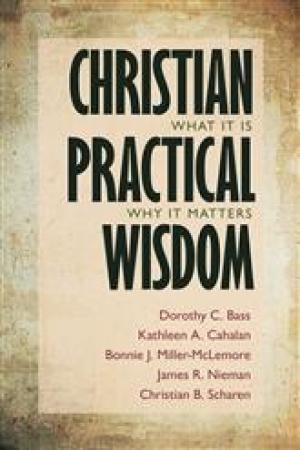
As a womanist biblical scholar working in the context of a theological institution, Christian Practical Wisdom: What It Is, Why It Matters helps me understand my role as a theological educator. Authored by Dorothy Bass, Kathleen A. Cahalan, Bonnie J. Miller-McLemore, James Nieman, and Christian B. Scharen, this volume takes seriously the concept of Christian practical wisdom (the ability to “render a proper assessment of a situation and to act rightly as a result”) (4). Theological educators are called to instill this virtue within students. Divided into three parts, the largest sections (Part One and Part Two) loosely interrogate embodied knowing with interdisciplinary conversations. Part Three serves as an invitation to collaboration and experimentation and expresses gratitude for the gift of collaboration that the authors experienced while working on this project. Indeed, collaborative work is rare within the academy of religious scholarship and makes me wonder what theological schools would look like if faculty from across disciplines gathered together to collaborate in their own contextual spaces. Here are brief highlights of a few essays. In “How Bodies Shape Knowledge,” Miller-McLemore engages the modern biases that separate bodily practices from our modern practices of worship. Thinking across denominational differences, Miller-McLemore ponders a theology of sensory movement that, while seemingly easy for children, becomes more difficult as we age. Realizing that we have a long history of “damning the body and its temptations” (29), Miller-McLemore uses the apt metaphor of “spooning” within the marital context to illustrate “everyday body wisdom” (30). Spooning serves as part of a discussion around how a body knows, enacts, and evokes love even in a state of unconscious sleep. As bodies lead, oftentimes thoughts follow. Miller-McLemore argues that the wisdom of God is bodily wisdom gained through everyday reminders of death and love together. Since sleep is like death as it mirrors the body’s vulnerability, the act of spooning while sleeping serves as a reminder of the love within the context of death. Miller-McLemore argues that there is disconnect between the spooning that we experience in relationship with God and how we traditionally teach within a theological context. I found two essays particularly edifying as a woman and a scholar of color. First, Scharen’s essay entitled “The Loss and Recovery of Practical Wisdom in the Modern West” evidences the need for a kind of knowing that is both concrete and universal, timely and timeless, practical and abstract (174). To highlight his point, Scharen engages the feminist history of the Bohemian Princess Elisabeth of the Palatinate and her letters to French philosopher Rene Descartes. Even though the mind-body dualistic legacy of Descartes ruled for a time in Western philosophy, Elisabeth’s recovered feminine voice rightly pushed Descartes to discuss his maxims for public life instead of relating his pontifications only to himself (160). For Elisabeth, practical wisdom had to relate to the practical ethics of public life and duty. Attention to the feminist revisionist history and philosophical debates behind these letters allows Scharen to converse with contemporary theologians such as Fergus Kerr and Sarah Coakley and the “taken-for-granted notions we live by” (166). In the essay “Biblical Imagination as a Dimension of Christian Practical Wisdom,” Bass rightly argues for the concept of biblical imagination as “a knowledge of, which cannot be had without life-shaping embodied participation” (236). As a womanist biblical scholar within a theological context, I am constantly advising students to embrace the “both/and” nature of academic biblical scholarship in combination with their embodied participation with the biblical text. Indeed, we need both. While I thoroughly enjoyed reading and pondering deeply the issue of Christian practical wisdom, please allow one critique. I wonder how the conversation and collaboration would have changed if there were a visibly identified religious scholar of color working on the volume. While each of the scholars involved are esteemed in their own right, I am left wondering how Christian practical wisdom looks different from other perspective such as, but not limited to, global South, African American, Latino/a, or Asian Christian perspectives. Nonetheless, I enjoyed reviewing such an important volume.
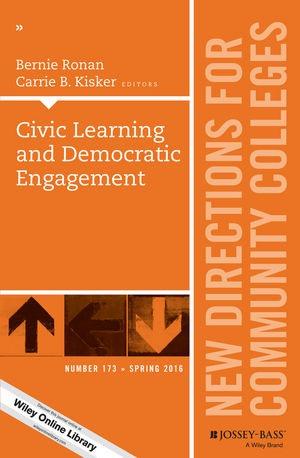
New Directions in Community Colleges, may be an unfamiliar journal to many scholars in theology and religion, but growing interest in community colleges as transformational contexts warrants attention. This edition presents scholarship on ethical and pedagogical issues of civic engagement in higher education. Recording workshops at the Kettering Foundation convened by Derek Barker collaborating with editors, Ronan and Kisker, these authors share the conviction that higher education should promote democratic values. Without fully acknowledging controversial aspects of that claim, they explore common ground working for social mobility, civic agency, and democratic practices such as voting, public discourse, and advocacy. Contributors reflect on two reports, both published in 2012: “Advancing Civic Learning,” representing the work of the U.S. Department of Education, and “A Crucible Moment,” written by the National Task Force on Civic Learning and Democratic Engagement, work of the American Association of Colleges and Universities. Both reports address educational goals of preparing engaged citizens who transfer civic skills like capacities for communicating, leading, organizing, and advocating from the classroom to workplace, public, and personal settings. Furthermore, the integration and assessment of civic learning and democratic engagement across educational programs from formal curriculum to extracurricular opportunities offered insight for building institutional support or resources for others innovative programs. For instance, Carrie Kisker surveyed sixty community colleges asking whether civic engagement was a goal stated in missions or strategic plans with dedicated infrastructure and incentives in tenure or advancement process. She found diversity of approaches but high level of integration in curriculum and encouragement in extracurricular programs. However, her findings document a lack of a standardized instrument to assess civic engagement and the need for more study of institutionalized support. Other highlights include David Matthews’s proposed deliberative pedagogy which he linked to timely questions about authority and legitimacy in the public mandate for institutions of higher education. For example, John J. Theis cited the problems of people losing confidence in each other and in institutions, drawing on Carcasson’s work noting that the “expert model” usually dominates higher education in ways that disempowers collective action (43). The authors connect their work as educators with enduring questions of ethics, cultural identities, and inequality. Significant numbers of students learning about religious studies and theology are enrolled in classes at community colleges with more racial and economic diversity than most seminary or elite college and university classes. Despite the lack of prestige or attraction these settings may have for many faculty, community colleges are rich in ability to shape citizens and hence the future of our communities. Furthermore, although many seminaries and religious studies departments compete fiercely and perpetuate bitter rivalries to attract students, community colleges seem better able to collaborate with each other and learn together in ways institutions for teaching religion and theology would do well to study. Since religious institutions also need leaders with civic competencies, theological educators concerned with the future will find the journal provocative. Especially those educators committed to promoting the common good, social justice, and public engagement will benefit from reading this book.
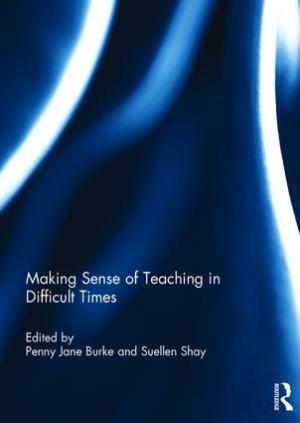
The ten chapters in this volume first appeared as a special issue of Teaching in Higher Education (2013). Each author is situated in particular classroom and institutional contexts ranging from South Africa to Australia, from Denmark to China and Canada, from the United Kingdom to the United States. Their expertise is far reaching. Although none of the contributors are in the areas of theology or religious studies, the questions raised and addressed in this volume center on strategies for effective teaching and learning. Collectively, these chapters supply a snapshot of the challenges and promises facing instructors of higher education. As a result, there are several potentially relevant sites for reflection and application. Grouped thematically, student-centered chapters highlight raising awareness of White Privilege (chapter 1) and of global citizenship through on-campus threshold-crossing experiences (chapter 3), undergraduate research (chapter 4), and social justice (chapter 8). More instructor-centered chapters confront the role of self-reflective practices (chapter 2), and of online education (chapter 10). Curricular chapters focus on inter-disciplinarity in an engineering curriculum (chapter 5), on the impact of problem-based learning on Chinese students undertaking higher education outside of their homeland (chapter 6), and on assessment practices (chapter 9). Of all of the chapters in this volume, “Reframing teaching relationships: from student-centered to subject-centered teaching,” would be the most suitable starting point for the reader of the Wabash Center’s online reviews. Although this chapter is situated at the center of the volume (chapter 7), it serves as the organizing chapter because it tackles an issue raised more specifically in the other chapters. Employing frame theory, the authors respond to questions of self-identity and the teaching relationship by advocating subject-centered learning. The strength of the volume rests with the particular contribution of each individual chapter. Offering a specific perspective in a local context, each author works within cleanly defined theoretical boundaries and approaches, and presents an argument worthy of further consideration and discussion. Despite this strength, however, the overall coherence of the volume suffers from the lack of a formal, introductory chapter and a final, concluding chapter. An additional chapter at the fore could justify the order of presentation of the collection (thematically topically, or through some other means) and facilitate the act of reading by explaining criteria for selection and inclusion; a closing chapter might indicate possible applications of the issues in other contexts and introduce new approaches or questions moving forward. The lack of these critical organizing chapters at the opening and closing of the volume requires the reader to determine the contours of coherence across the chapters and to impose frameworks for interpretation.
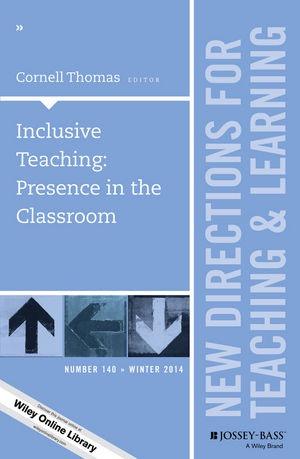
Inclusive Teaching: Presence in the Classroom (New Directions for Teaching and Learning, Number 140)
In his opening essay in the collection, editor Cornell Thomas of Texas Christian University invites readers to envision a new type of pedagogy that sees each student as a “unique being with the potential for great growth” (2). The educational philosophies of John Dewey and bell hooks grace the pages of this volume, even when they are not cited directly. The strength of this small collection lies in its variety. Ranging from an existentialism-inspired clarion call for the importance of “presence” in the classroom (Don Hufford) to a challenge posed to teachers and other mentors (in and out of the classroom) to integrate “criticality” and identity development in order to better meet the needs of students from low socioeconomic backgrounds (Anthony Walker), the essays are unfortunately a bit uneven when it comes to offering specific strategies and details about best practices. Prophetic calls for practicing “intellectual hospitality” and the value of more robust “connectedness” with our students are preaching ideas to the already converted, I suspect. Most readers of this journal likely already practice such pedagogy and are committed to creating “environments that maximize learners’ academic and social growth” (back cover). Some of the essays rely upon the briefest of anecdotes. The shining counter-example to that trend is the longer piece by Freyca Calderon Berumen and Cecilia Silva (also from Texas Christian University), describing a creative example of civic engagement for preservice teachers in an ESL class: students were matched up with newly resettled refugee families from Nepal and Burma in order to help with initial visits to local schools. The unexpected successes of their “Refugee Family Project” offers a nice example of why it is important for us to be authentic and creative if we are truly committed to more inclusive teaching. The essays offering concrete advice or descriptions of successful projects are the most rewarding, and some of the bibliographies offer further resources for anyone interested in exploring how critical race theory might be applied to our pedagogies and practices in higher education. In this vein, Kimberly Diggles’ essay is particularly helpful, as she lays out specific suggestions for implementing cross-institutional efforts that are not just racially aware but actively anti-racist in their intent and in their transformative effects on campus culture and student learning. I also appreciated Anthony Walker’s call for involving students in curricular reform as an antidote to what is otherwise “a propensity for an ideological stasis” (78). Walker goes on to state that, “a curriculum built for the integration of students’ thoughts and experiences has the ability to create a learning environment in which students are connected and engaged” (79). To the degree that teachers in religious studies have worked to develop such learning environments in their classrooms in recent years, Walker’s insights suggest that we should take the lead in larger curricular change. Unfortunately, given its brevity and the uneven quality of the essays, the collection does not ultimately deliver what is promised by the summary on the book jacket.
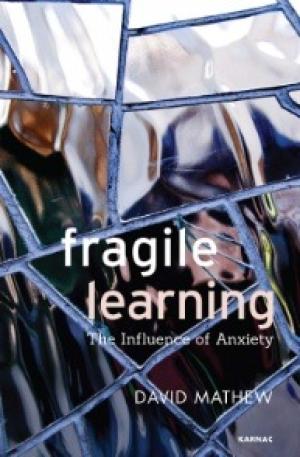
David Mathew introduces Fragile Learning: The Influence of Anxiety as a “book about barriers to learning.” He adds: “as a selection of what grew to be an interrelated body of published papers, Fragile Learning asks the reader to consider a wide variety of factors that might test a learner’s resilience or make the process of learning precarious and problematic.” These obstacles include “technology, environment, culture, age, disease, and incarceration. . . The book examines anxiety – both learner anxiety and educator anxiety – as both an inevitable and important pedagogic tool” (xv). In the chapters of the book, Mathew offers case studies of “fragile learners”: learners for whom obstacles like those presented above threaten to derail the learning process entirely. However, the definition of learner and learning is extremely broad, encompassing incarcerated youth engaged in face-to-face learning, diverse learners in online courses, a colleague struggling with physical pain, and workers in a horse stable. The wide range of subjects reminds us that many human behaviors, including academic study, work, and navigation of the medical system, are all examples of learning. However, the diversity of subjects dilutes the degree to which Mathew’s insights are useful for educators engaged with learning in a more traditional sense. While the range of subjects is very broad, Mathew’s fundamental approach is consistent. In each case, he explores the psychological dimensions of the learners’ experiences and their affects on the learners’ behavior. For example, one case study centers on an adult student in an online course who was situated in a traditional cultural context in which age, maleness, and social status were privileged categories. Mathews describes how assuming the role of student, in a context in which these factors did not automatically convey status or demand respect, was challenging and anxiety-producing for the student. This anxiety was an obstacle to his learning. In another essay, Mathew and his colleague, Susan Sapsed, describe the psychological effects of Sapsed’s ongoing experience of physical pain and unsuccessful medical treatment and the ways in which both the physical and psychic pain impacted her professional and personal life. In his discussions of the cases, Mathew’s brings first-person accounts of the learners’ experiences or his observations of them into conversation with psychoanalytic theory, primarily, but not exclusively, about anxiety. In the short space of the essays, the introduction of psychoanalytic theory serves to reframe the individual cases as examples of more general psychological experiences. In some of the essays, Mathew describes or proposes pedagogical approaches that help learners tolerate and address the obstacles to their learning. In keeping with his psychoanalytic orientation, the approaches he advocates cast the educator in a therapeutic role – either as pastoral caregiver or as an object of transference for the fragile learner. Mathew’s fundamental argument is an important one. Educators and educational systems need to be attentive to the ways in which the life experiences of many learners catalyze a range of psychological conditions, including anxiety, low self-esteem, inability to trust, and depression, that are often significant obstacles to learning. A psychoanalytic perspective of these obstacles can be a useful element in designing systemic and individual pedagogical supports for these learners. However, the anthological format of the book, and Mathew’s tendency to focus more on the psychoanalytic theory in itself rather than on the cases he presents limit the utility of the book for practitioners dedicated to supporting fragile learners in educational settings.
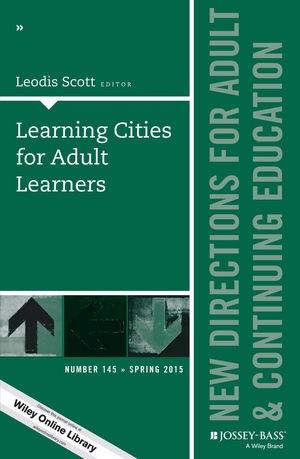
In Learning Cities for Adult Learners, Leodis Scott compiles seven articles that explore how cities are uniquely positioned to provide new directions for adult and continuing education. “Adult education needs more space,” Scott writes, and scholars and practitioners must take the lead in building larger spaces for all learners (1). The larger spaces are cities themselves – “learning cities” that take education beyond the traditional walls of schools, colleges, and workplaces in order to connect and grow in all life experiences. Scott suggests cities can take on the characteristics of learning, and in doing so, adults of every social class and educational level can experience a new quality of life. Scott is cofounder and research scholar at LearnLong Institute for Education and Learning Research, and lecturer in adult learning philosophy and practice at DePaul University–School for New Learning and Columbia University–Teachers College. Contributors to the volume come from a variety of universities, research centers, and programs that are committed to connecting the scholarship of adult learning with concrete practices that encourage a more widespread approach to learning. Most articles are co-authored, further demonstrating how collaboration and cross-disciplinary thinking is a natural hallmark of building the necessary infrastructure for learning cities. After an Editor’s Note by Scott, Connie Watson and Aimee Tiu Wu introduce key themes of lifelong learning and lifelong education in Chapter 1, as they explore the evolution and reconstruction of learning cities for sustainable actions. In Chapter 2, Hiram E. Fitzgerald and Renee Zientek write about the connections between learning cities, systems change, and community engagement scholarship in the context of a learning city/region. Lyle Yorks and Jody Barto investigate in Chapter 3 the interconnections between workplace, organizational, and societal learning, showing how 21st-century cities must function to promote learning for a larger society. In Chapter 4, Alysia Peich and Cynthia Needles Fletcher provide research and a case study for how public libraries and cooperative extension can work as community partners for lifelong learning and learning cities. In Chapter 5, Joanne Howard, Diane Howard, and Ebbin Dotson provide a connected history of health and education and demonstrate the necessity of including both health and education endeavors in any strategic planning of learning cities. Dan K. Hibbler and Leodis Scott write in Chapter 6 about the role of leisure in humanizing learning cities. Finally, Scott provides a summary in Chapter 7 of the main themes from the book and suggests a way forward: scholars and practitioners in the field of adult and continuing education can become facilitators of learning cities so that citizens have the power and ability to construct their own cities appropriate to their needs. This book is written for scholars and practitioners in adult learning and provides both a compelling vision and practical strategies for how citizens can work across fields and disciplines for the betterment of society. It will take leadership, vision, and talent to connect civic institutions in the formation of learning cities. One strategic type of institution not mentioned in the book is local religious communities. It seems that religious groups could be uniquely situated to both model and help facilitate the essential elements of a learning city. As scholars and practitioners continue to work towards this new direction for adult and continuing education, they will certainly do well to collaborate with as many different types of civic institutions as possible – for building a learning city is certainly worth the pursuit.
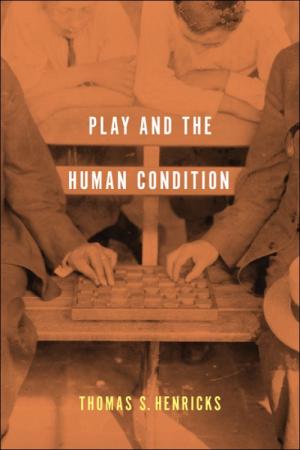
Thomas Henricks’ Play and the Human Condition provides a valuable guide to the academic study of human play. Henricks has been teaching at Elon University since 1977 as a sociologist. He has been studying human play since his PhD dissertation, which explored the relationship between sports and social stratification, and he has over thirty years of academic publications in play studies. In this volume, Henricks attempts to advance his thesis that “play is fundamentally a sense-making activity and that the broader goal of this process is to construct the subjectively inhabited sphere of operations and understandings called the self” (209). Henricks organizes this book into an introduction and nine chapters. He begins the introduction with three questions that guide his work: “How do we discover who we are? How do we determine the character of the world in which we live? And how do we decide what we can do in a world so configured?” (1). The introduction provides a rationale for studying play as well as an overview of the book. The first three chapters explore general models of play. In Chapter I, Henricks explores the difficulties around establishing a definition for play as he reviews several modern definitions. He presents six ways of understanding play: as action, as disposition, as experience, as context, as interaction, and as activity while he connects each model to their major theorists. The next chapter presents how play is different from other patterns of human behaviors including ritual, work, and communitas. The final chapter in this section develops a theory of play that centers upon self-realization. Henricks notes that “play best teaches people how to conceive self-directed lines of action and to mobilize varieties of resources to realize these ambitions” (89). In the middle of the book, Henricks devotes five chapters to various aspects of play including psychology, the human body, physical environment, social life, and culture. After focusing on the mind in his chapter on the psychology of play, Henricks turns to the human body and play in Chapter Five. While examining animal play, he concludes “play integrates symbolic and physically based meaning systems. . . play is a form of consultation between matters manifest and latent, known and unknown. In consequences, players extend and secure their understanding of themselves” (137). Next, he engages the physical environment and social aspects of play, because as he explains, “play is complicated by the presence of more than one player” (161). Chapter Eight builds upon the foundation of the earlier chapters to explore culture and play. This is an important chapter that engages the work of Geertz, Deerida, and Gadamer to list a few. Henricks’ final chapter weaves the various themes of the earlier chapters together to support his thesis. He examines the relationship between play and freedom. He concludes that “if play has a legacy, it is its continuing challenge to people of every age to express themselves openly and considerately in the widest human contexts” (227). Play and the Human Condition is a well-developed and scholarly text. Henricks engages a wide range of disciplines and carefully builds his arguments. The book offers a detailed road map to professional play literature that will be very useful to any scholar researching in this field. Except for a few terms, like communitas, this volume is accessible for the non-specialist. Theologians and graduate students should have no problem understanding and engaging this text in fruitful dialogue. This volume would be a good addition to major theological libraries. It is especially important for scholars and programs that explore ritual studies and hermeneutics. Chapter Four, on play as therapy, gives a foundation for this important approach to clergy who want to explore this avenue of pastoral care and counseling.
Wabash Center Staff Contact
Sarah Farmer, Ph.D
Associate Director
Wabash Center
farmers@wabash.edu